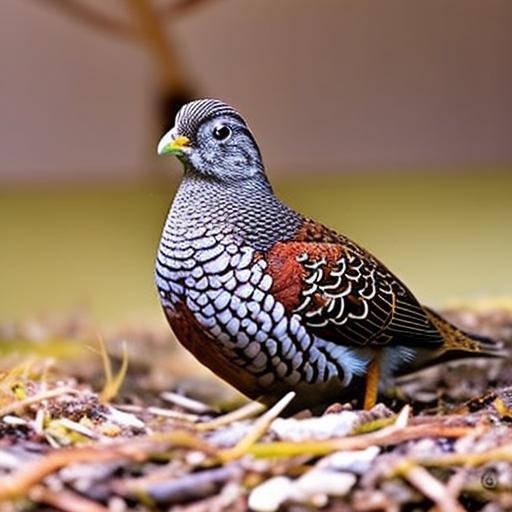Creating the right environment for your pet is crucial to their overall well-being and happiness. Whether you have a dog, cat, bird, or any other type of pet, it’s important to provide them with a safe and comfortable space where they can thrive. This means ensuring that their living area is free from hazards, such as toxic plants, small objects that could be swallowed, or sharp edges that could cause injury. Additionally, it’s important to consider the temperature and lighting in their environment. For example, reptiles require specific temperature and lighting conditions to mimic their natural habitat.
Furthermore, it’s important to consider the social environment for your pet. Some animals are social creatures and require the company of their own kind, while others may prefer to be solitary. It’s important to research the specific needs of your pet’s species to ensure that they are provided with the appropriate social environment. For example, if you have a parrot, it’s important to provide them with plenty of social interaction and mental stimulation to prevent boredom and loneliness. Overall, creating the right environment for your pet involves careful consideration of their physical, social, and emotional needs to ensure that they can live a happy and fulfilling life.
Creating the right environment for your pet is essential for their overall well-being and happiness. It is important to provide a space that is safe, comfortable, and stimulating for your pet. This means ensuring that their living area is free from any potential hazards, such as toxic plants or small objects that could be swallowed. Additionally, it’s important to consider the temperature and lighting in their environment. For example, reptiles require specific temperature and lighting conditions to mimic their natural habitat. Furthermore, it’s important to consider the social environment for your pet. Some animals are social creatures and require the company of their own kind, while others may prefer to be solitary. It’s important to research the specific needs of your pet’s species to ensure that they are provided with the appropriate social environment. Overall, creating the right environment for your pet involves careful consideration of their physical, social, and emotional needs to ensure that they can live a happy and fulfilling life.
Key Takeaways
- Creating the right environment is crucial for the well-being of animals in captivity, including providing appropriate temperature, lighting, and shelter.
- Proper nutrition is essential for the health and vitality of animals, and it is important to provide a balanced diet that meets their specific dietary needs.
- Maintaining cleanliness is important to prevent the spread of disease and ensure a healthy living environment for animals.
- Ensuring adequate space is necessary to allow animals to exhibit natural behaviors and reduce stress and aggression.
- Monitoring health and wellness is crucial for early detection of any health issues and to provide timely medical care for animals in captivity.
Providing Proper Nutrition
Proper nutrition is essential for the health and well-being of your pet. Just like humans, pets require a balanced diet that provides them with the necessary nutrients to support their growth, energy levels, and overall health. It’s important to research the specific dietary needs of your pet’s species and provide them with a diet that meets those requirements. For example, dogs require a diet that is high in protein and fat, while cats require a diet that is high in protein and low in carbohydrates. Additionally, it’s important to consider any special dietary needs that your pet may have, such as food allergies or sensitivities.
In addition to providing a balanced diet, it’s important to ensure that your pet has access to clean and fresh water at all times. Water is essential for hydration and helps to regulate body temperature, aid digestion, and flush out toxins from the body. It’s important to regularly clean and refill your pet’s water bowl to ensure that they have access to clean water throughout the day. Overall, providing proper nutrition for your pet involves careful consideration of their specific dietary needs and ensuring that they have access to clean and fresh water at all times.
Proper nutrition is crucial for the health and well-being of your pet. It’s important to provide them with a balanced diet that meets their specific dietary needs. This may involve researching the specific nutritional requirements of your pet’s species and providing them with a diet that meets those requirements. For example, dogs require a diet that is high in protein and fat, while cats require a diet that is high in protein and low in carbohydrates. Additionally, it’s important to consider any special dietary needs that your pet may have, such as food allergies or sensitivities. In addition to providing a balanced diet, it’s important to ensure that your pet has access to clean and fresh water at all times. Water is essential for hydration and helps to regulate body temperature, aid digestion, and flush out toxins from the body. It’s important to regularly clean and refill your pet’s water bowl to ensure that they have access to clean water throughout the day.
Maintaining Cleanliness
Maintaining cleanliness in your pet’s living area is essential for their health and well-being. Regular cleaning helps to prevent the buildup of bacteria, parasites, and other harmful pathogens that could pose a risk to your pet’s health. This includes cleaning their food and water bowls regularly, as well as cleaning their litter box or cage to prevent odors and bacterial growth. Additionally, it’s important to regularly groom your pet to prevent matting of fur, skin infections, and other hygiene-related issues. This may involve brushing their fur, trimming their nails, cleaning their ears, and bathing them as needed.
Furthermore, it’s important to regularly clean and disinfect your pet’s toys and accessories to prevent the spread of germs and bacteria. This includes washing their bedding, cleaning their toys, and disinfecting any surfaces that they come into contact with regularly. Overall, maintaining cleanliness in your pet’s living area involves regular cleaning and grooming to prevent the buildup of harmful pathogens and ensure that they have a clean and hygienic environment.
Maintaining cleanliness in your pet’s living area is crucial for their health and well-being. Regular cleaning helps to prevent the buildup of bacteria, parasites, and other harmful pathogens that could pose a risk to your pet’s health. This includes cleaning their food and water bowls regularly, as well as cleaning their litter box or cage to prevent odors and bacterial growth. Additionally, it’s important to regularly groom your pet to prevent matting of fur, skin infections, and other hygiene-related issues. This may involve brushing their fur, trimming their nails, cleaning their ears, and bathing them as needed. Furthermore, it’s important to regularly clean and disinfect your pet’s toys and accessories to prevent the spread of germs and bacteria. This includes washing their bedding, cleaning their toys, and disinfecting any surfaces that they come into contact with regularly.
Ensuring Adequate Space
Ensuring adequate space for your pet is essential for their physical and mental well-being. Different species of animals have different space requirements based on their size, activity level, and natural behavior. For example, dogs require space to move around freely, stretch their legs, and engage in physical activity. Similarly, birds require a large cage or aviary that allows them to fly and move around freely. It’s important to research the specific space requirements of your pet’s species and provide them with an environment that meets those needs.
Additionally, it’s important to consider the layout of your pet’s living area to ensure that they have access to different areas for eating, sleeping, playing, and using the bathroom. This may involve providing them with separate areas for these activities or ensuring that they have enough space within their living area to engage in these activities comfortably. Overall, ensuring adequate space for your pet involves careful consideration of their specific space requirements based on their species’ size, activity level, and natural behavior.
Ensuring adequate space for your pet is crucial for their physical and mental well-being. Different species of animals have different space requirements based on their size, activity level, and natural behavior. For example, dogs require space to move around freely, stretch their legs, and engage in physical activity. Similarly, birds require a large cage or aviary that allows them to fly and move around freely. It’s important to research the specific space requirements of your pet’s species and provide them with an environment that meets those needs. Additionally, it’s important to consider the layout of your pet’s living area to ensure that they have access to different areas for eating, sleeping, playing, and using the bathroom.
Monitoring Health and Wellness
Monitoring the health and wellness of your pet is essential for early detection of any potential health issues or concerns. This involves regular veterinary check-ups to ensure that your pet is up-to-date on vaccinations, parasite prevention, dental care, and overall health assessments. Additionally, it’s important to monitor your pet’s behavior for any changes that could indicate underlying health issues or concerns. This may involve observing changes in appetite, energy levels, mobility, grooming habits, or any signs of discomfort or pain.
Furthermore, it’s important to provide your pet with regular exercise and mental stimulation to support their overall health and well-being. This may involve engaging in physical activities such as walking or playing with toys, as well as providing them with mental stimulation through interactive toys or training exercises. Overall, monitoring the health and wellness of your pet involves regular veterinary check-ups, observation of behavior changes, providing regular exercise and mental stimulation.
Monitoring the health and wellness of your pet is crucial for early detection of any potential health issues or concerns. This involves regular veterinary check-ups to ensure that your pet is up-to-date on vaccinations, parasite prevention, dental care, and overall health assessments. Additionally, it’s important to monitor your pet’s behavior for any changes that could indicate underlying health issues or concerns. This may involve observing changes in appetite, energy levels, mobility, grooming habits or any signs of discomfort or pain.
Providing Enrichment and Stimulation

Providing enrichment and stimulation for your pet is essential for their mental well-being and overall happiness. This may involve providing them with interactive toys that encourage play and mental stimulation or engaging in training exercises that challenge their cognitive abilities. Additionally, it’s important to provide them with opportunities for exploration and environmental enrichment by introducing new toys or rearranging their living area from time to time.
Furthermore, it’s important to provide your pet with opportunities for social interaction with other animals or humans to prevent boredom and loneliness. This may involve arranging playdates with other pets or engaging in activities with your pet such as walking or playing games together. Overall providing enrichment and stimulation for your pet involves providing them with opportunities for play, exploration, social interaction as well as mental stimulation through training exercises.
Providing enrichment and stimulation for your pet is essential for their mental well-being and overall happiness. This may involve providing them with interactive toys that encourage play and mental stimulation or engaging in training exercises that challenge their cognitive abilities. Additionally, it’s important to provide them with opportunities for exploration and environmental enrichment by introducing new toys or rearranging their living area from time to time.
Understanding Behavioral Needs
Understanding the behavioral needs of your pet is essential for building a strong bond with them and providing them with appropriate care. This involves researching the natural behavior of your pet’s species as well as observing their individual behavior patterns in different situations. For example understanding how dogs communicate through body language or how cats express affection can help you better understand their needs.
Additionally understanding the behavioral needs of your pet can help you address any behavioral issues or concerns such as anxiety aggression or destructive behavior by providing appropriate training socialization or environmental modifications.
Understanding the behavioral needs of your pet is essential for building a strong bond with them and providing them with appropriate care this involves researching the natural behavior of your pets species as well as observing their individual behavior patterns in different situations.
In conclusion providing proper care for your pets involves creating the right environment providing proper nutrition maintaining cleanliness ensuring adequate space monitoring health wellness providing enrichment stimulation understanding behavioral needs these are all essential aspects of responsible pet ownership that contribute towards ensuring that your pets live happy healthy fulfilling lives.
In conclusion, providing proper care for your pets involves creating the right environment, providing proper nutrition, maintaining cleanliness, ensuring adequate space, monitoring health and wellness, providing enrichment and stimulation, and understanding behavioral needs. These are all essential aspects of responsible pet ownership that contribute towards ensuring that your pets live happy, healthy, and fulfilling lives. It is important to prioritize the well-being of our pets and to consistently meet their physical, emotional, and social needs in order to provide them with a high quality of life.
If you’re considering keeping button quail indoors, you may also be interested in learning about the importance of providing proper heating for a chicken coop. Check out this informative article on heater options for a chicken coop to ensure your feathered friends stay warm and comfortable during colder months. Understanding the heating needs of poultry can help you create a cozy environment for your button quail as well.
FAQs
What are button quail?
Button quail, also known as Chinese painted quail, are small ground-dwelling birds native to Southeast Asia. They are popular as pets due to their small size and colorful plumage.
Can button quail be kept indoors?
Yes, button quail can be kept indoors as pets. They are well-suited to indoor environments as long as their specific needs are met.
What are the housing requirements for keeping button quail indoors?
Button quail require a spacious enclosure with a solid bottom to prevent injury to their delicate feet. The enclosure should also have good ventilation and be kept in a quiet area to minimize stress.
What do button quail eat?
Button quail are omnivorous and require a varied diet that includes a high-quality commercial game bird feed, as well as fresh fruits, vegetables, and live insects.
Do button quail need companionship?
Button quail are social birds and do best when kept in pairs or small groups. It is important to provide them with appropriate companionship to prevent loneliness and stress.
What are some common health issues for button quail?
Common health issues for button quail include respiratory infections, parasites, and foot problems. It is important to provide a clean and stress-free environment to prevent these issues.
Are button quail noisy?
Button quail are relatively quiet birds, making them suitable for indoor environments. They may produce soft, low cooing sounds, but they are not known for loud or disruptive vocalizations.
Meet Walter, the feathered-friend fanatic of Florida! Nestled in the sunshine state, Walter struts through life with his feathered companions, clucking his way to happiness. With a coop that’s fancier than a five-star hotel, he’s the Don Juan of the chicken world. When he’s not teaching his hens to do the cha-cha, you’ll find him in a heated debate with his prized rooster, Sir Clucks-a-Lot. Walter’s poultry passion is no yolk; he’s the sunny-side-up guy you never knew you needed in your flock of friends!







